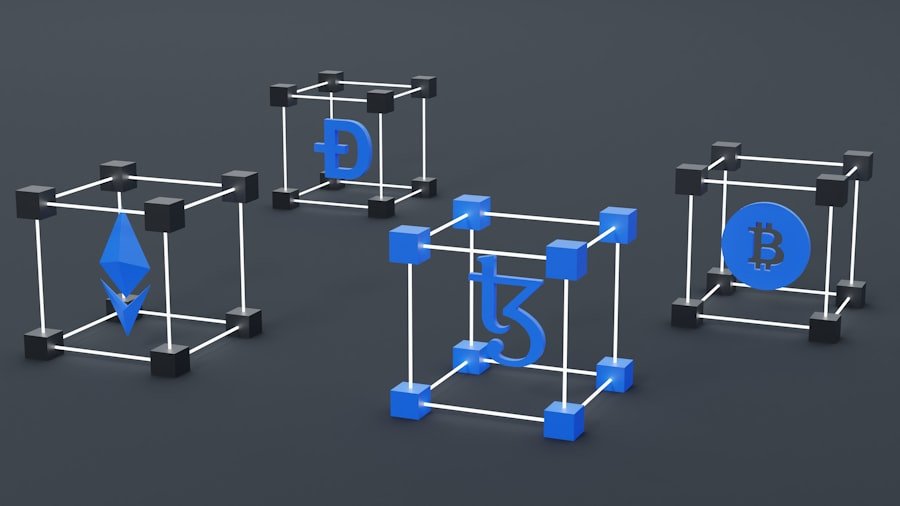In the software as a service (SaaS) industry, companies must decide whether to develop their own solution or purchase an existing one. This choice significantly impacts a business’s efficiency and success, necessitating careful evaluation of each option’s advantages and disadvantages. Developing a SaaS solution involves creating a custom software application tailored to the company’s specific needs, while purchasing a SaaS solution entails acquiring a pre-built software application from a third-party vendor.
Each approach has distinct benefits and drawbacks, and businesses must consider their unique requirements and resources before making a decision. The build vs. buy decision in SaaS is multifaceted, requiring thorough analysis of factors such as cost, time to market, scalability, and customization capabilities.
Understanding the pros and cons of each option enables businesses to make informed decisions aligned with their goals and objectives. This article will examine the advantages and disadvantages of both building and buying SaaS solutions, providing insights for small and medium-sized businesses as well as large enterprises. Additionally, it will discuss key factors to consider when making this decision, helping companies choose the most suitable option for their specific needs and circumstances.
Key Takeaways
- The build vs. buy dilemma in SaaS involves deciding whether to build your own solution or buy an existing one.
- Building your own SaaS solution allows for customization and control, but it requires significant time, resources, and expertise.
- Buying a SaaS solution offers quick implementation and support, but may lack the specific features or flexibility you need.
- Small and medium-sized businesses should consider factors such as budget, resources, and scalability when making the build vs. buy decision.
- Large enterprises should weigh factors such as integration capabilities, security, and long-term maintenance when deciding to build or buy a SaaS solution.
Customization and Control
Building your own SaaS solution offers the advantage of complete customization and control over the software application. This means that businesses can tailor the solution to their specific requirements, ensuring that it meets their unique needs and objectives. Additionally, building a custom SaaS solution allows businesses to differentiate themselves in the market by offering unique features and functionalities that are not available in off-the-shelf solutions.
Flexibility and Scalability
Furthermore, businesses have the flexibility to scale and evolve the software application over time as their needs change, without being limited by the constraints of a pre-built solution.
Challenges and Considerations
On the other hand, building your own SaaS solution requires a significant investment of time, resources, and expertise. Developing a custom software application from scratch can be a complex and time-consuming process, requiring skilled developers and technical resources. Additionally, businesses must consider the ongoing maintenance and support required to keep the software application up to date and functioning effectively. Furthermore, building a SaaS solution from scratch can be costly, as it involves upfront development costs as well as ongoing expenses for maintenance and updates. In conclusion, while building your own SaaS solution offers the advantage of customization and control, it also comes with the challenges of time, resources, and cost. Businesses must carefully weigh these factors before deciding to pursue this option.
Pros and Cons of Buying a SaaS Solution
Buying a SaaS solution offers several advantages, including cost savings, time to market, and access to advanced features and functionalities. By purchasing a pre-built software application from a third-party vendor, businesses can save time and resources that would otherwise be spent on developing a custom solution from scratch. Additionally, buying a SaaS solution allows businesses to benefit from the expertise and experience of the vendor, who is responsible for maintaining and updating the software application.
This can result in cost savings and reduced complexity for businesses, as they do not have to worry about the technical aspects of software development and maintenance. However, buying a SaaS solution also comes with its own set of challenges. One of the main disadvantages is the lack of customization and control over the software application.
While pre-built solutions may offer a range of features and functionalities, they may not fully align with the specific requirements and objectives of a business. This can limit the ability of businesses to differentiate themselves in the market and may result in a less tailored solution. Additionally, businesses may be dependent on the vendor for ongoing support and updates, which can pose risks in terms of reliability and responsiveness.
In summary, while buying a SaaS solution offers advantages such as cost savings and time to market, it also comes with limitations in terms of customization and control. Businesses must carefully consider these factors before deciding to purchase a pre-built solution.
Considerations for Small and Medium-sized Businesses

For small and medium-sized businesses (SMBs), the build vs. buy dilemma in SaaS presents unique considerations. Building a custom SaaS solution may be challenging for SMBs due to limited resources and expertise.
Developing a software application from scratch requires technical skills and resources that may not be readily available to SMBs, making it a costly and time-consuming endeavor. On the other hand, buying a pre-built SaaS solution can offer SMBs access to advanced features and functionalities without the need for extensive technical expertise or resources. This can result in cost savings and faster time to market for SMBs, allowing them to focus on their core business activities.
However, SMBs must also consider the limitations of pre-built solutions in terms of customization and scalability. Off-the-shelf solutions may not fully align with the specific needs and objectives of SMBs, limiting their ability to differentiate themselves in the market. Additionally, SMBs must carefully evaluate the long-term costs and dependencies associated with purchasing a SaaS solution, as ongoing expenses for support and updates can add up over time.
In conclusion, SMBs must carefully weigh the advantages and disadvantages of building vs. buying a SaaS solution, considering their unique resources and requirements before making a decision.
Considerations for Large Enterprises
Large enterprises face their own set of considerations when it comes to the build vs. buy dilemma in SaaS. Building a custom SaaS solution may be more feasible for large enterprises due to their extensive resources and technical expertise.
Large enterprises have the capability to invest in developing a custom software application tailored to their specific requirements, allowing them to differentiate themselves in the market with unique features and functionalities. Additionally, large enterprises have the resources to support ongoing maintenance and updates for a custom solution, reducing dependency on third-party vendors. However, large enterprises must also consider the potential drawbacks of building their own SaaS solution, including the significant investment of time and resources required for development.
Additionally, large enterprises must carefully evaluate whether the benefits of customization outweigh the costs and complexities associated with developing a custom solution from scratch. On the other hand, buying a pre-built SaaS solution may offer large enterprises access to advanced features and functionalities without the need for extensive development efforts. This can result in cost savings and faster time to market for large enterprises, allowing them to focus on their core business activities.
However, large enterprises must carefully evaluate whether pre-built solutions fully align with their specific requirements and objectives, considering potential limitations in terms of customization and scalability. In conclusion, large enterprises must carefully weigh the advantages and disadvantages of building vs. buying a SaaS solution, considering their extensive resources and requirements before making a decision.
Factors to Consider When Making Your Decision
Cost Considerations
One of the most important factors to consider is cost, including upfront development costs as well as ongoing expenses for maintenance and updates. Businesses must carefully evaluate their budget and resources to determine whether building or buying a SaaS solution is more feasible in terms of cost.
Time to Market and Customization
Another critical factor is time to market, as businesses must assess how quickly they need to deploy a software application to meet their objectives. Building a custom SaaS solution may take longer than purchasing a pre-built solution, which can impact time-sensitive business initiatives. Additionally, businesses must consider their specific requirements and objectives when evaluating whether to build or buy a SaaS solution, including the need for unique features and functionalities tailored to their specific needs.
Scalability and Technical Expertise
Scalability is another vital factor to consider when making this decision. Businesses must assess whether they need a solution that can grow and evolve with their changing needs over time. Furthermore, businesses must consider their technical expertise and resources when evaluating whether to build or buy a SaaS solution. Developing a custom software application requires skilled developers and technical resources that may not be readily available to all businesses.
Making the Right Choice for Your Business

The build vs. buy dilemma in SaaS is a complex decision that requires careful consideration of various factors such as cost, time to market, customization, scalability, and technical expertise. By understanding the pros and cons of each option, businesses can make an informed decision that aligns with their goals and objectives.
For small and medium-sized businesses (SMBs), buying a pre-built SaaS solution may offer cost savings and faster time to market without the need for extensive technical expertise or resources. However, SMBs must carefully consider the limitations of pre-built solutions in terms of customization and scalability. On the other hand, large enterprises may have the resources and technical expertise to invest in developing a custom SaaS solution tailored to their specific requirements.
However, large enterprises must carefully evaluate whether the benefits of customization outweigh the costs and complexities associated with developing a custom solution from scratch. Ultimately, businesses must carefully weigh these factors before deciding whether to build or buy a SaaS solution, ensuring that they make the right choice for their unique needs and circumstances. By doing so, businesses can position themselves for success in an increasingly competitive market landscape.
If you’re considering the Build vs. Buy dilemma for your SaaS strategy, you may want to check out the SaaS Marketplace for insights and resources. They offer a variety of articles and resources to help you navigate the decision-making process. One article that may be particularly helpful is their piece on the benefits of using a SaaS marketplace, which can provide valuable information on how to leverage existing solutions to ignite your business growth. You can find it here.
FAQs
What is the “Build vs. Buy” SaaS strategy?
The “Build vs. Buy” SaaS strategy refers to the decision-making process that businesses go through when deciding whether to build their own software solution in-house or to purchase an existing software as a service (SaaS) solution from a third-party vendor.
What are the advantages of building a SaaS solution in-house?
Building a SaaS solution in-house allows for complete customization and control over the software’s features and functionality. It also provides the opportunity to create a solution that is tailored specifically to the business’s unique needs and requirements.
What are the advantages of buying a SaaS solution from a third-party vendor?
Buying a SaaS solution from a third-party vendor can save time and resources, as the solution is already developed and ready to use. It also allows businesses to benefit from the vendor’s expertise and ongoing support and updates.
What factors should businesses consider when deciding between building and buying a SaaS solution?
Businesses should consider factors such as their budget, timeline, internal resources and expertise, the level of customization required, and the long-term maintenance and support needs when deciding between building and buying a SaaS solution.
How can the “Build vs. Buy” SaaS strategy ignite business growth?
Choosing the right SaaS strategy can ignite business growth by providing the necessary tools and technology to streamline operations, improve efficiency, and better serve customers. Whether building or buying, the right SaaS strategy can position a business for success in the digital age.